Discover Geology Bites
Geology Bites

Geology Bites
Author: Oliver Strimpel
Subscribed: 368Played: 9,571Subscribe
Share
© Oliver Strimpel
Description
What moves the continents, creates mountains, swallows up the sea floor, makes volcanoes erupt, triggers earthquakes, and imprints ancient climates into the rocks? Oliver Strimpel, a former astrophysicist and museum director asks leading researchers to divulge what they have discovered and how they did it.
To learn more about the series, and see images that support the podcasts, go to geologybites.com.
Instagram: @GeologyBites
Bluesky: GeologyBites
X: @geology_bites
Email: geologybitespodcast@gmail.com
To learn more about the series, and see images that support the podcasts, go to geologybites.com.
Instagram: @GeologyBites
Bluesky: GeologyBites
X: @geology_bites
Email: geologybitespodcast@gmail.com
116 Episodes
Reverse
Over 6,000 exoplanets have now been found, and the number is constantly rising. This has galvanized research into whether one of them might host life. Since all forms of life on Earth require liquid water, at least at some stage in their life cycle, it is natural to suppose that in order to be habitable, an exoplanet should also have liquid water. While much of the public discussion has focussed on constraining the so-called Goldilocks zone, i.e., not too hot nor too cold for liquid water to exist, an equally key issue is how a planet would get its water in the first place. In the podcast, Anat Shahar explains how her modeling and experiments predict that plenty of water would form as a result of chemical reactions between the hydrogen atmospheres observed on many exoplanets and the magma ocean with which planets initially form..Shahar is a Staff Scientist and Deputy for Research Advancement at the Earth and Planets Laboratory at the Carnegie Institution for Science in Washington, DC.
Plutons are bodies of igneous rock that crystallize from magma at depth below the Earth’s surface. But even though this magma never makes it to the surface, it still has to travel many kilometers up from its source near the base of the crust to the upper crust where plutons form. In the podcast, Keith Klepeis explains how it makes that journey and describes the shape of the resulting structures. Many of his findings come from one region in particular that provides an exceptional window into the origin, evolution, and structure of plutons – the Southern Fiordland region of New Zealand’s South Island.Klepeis is a Professor in the Department of Geography and Geosciences at the University of Vermont.
There are three main types of geodetic measurement systems — satellite-based systems such as GPS, very long baseline interferometry (VLBI), and interferometric synthetic-aperture radar (InSAR). While each type of systems has its particular strengths, the cost of satellite-based receivers has plummeted. Millimeter-level accuracy will soon be incorporated into phones. This has broadened the kinds of geological questions we can now address with such systems. In the podcast, Tom Herring describes how these systems are giving us new insight into plate motions, slow and fast deformation associated with faults and earthquakes, the Earth’s rotation, as well as applications in civil engineering, such as dams and tall buildings, and agriculture.Herring is a pioneer in high-precision geodetic analytical methods and applications for satellite-based navigation systems to study the Earth’s surface. He is a Professor in the Earth, Atmospheric, and Planetary Sciences department at the Massachusetts Institute of Technology.
In this episode, Jiří Žák describes the two main orogenies whose remnants figure prominently in central European geology: the Cadomian orogeny that lasted from the late Neoproterozoic to the early Cambrian (c. 700 Ma to c. 425 Ma) and the Variscan orogeny that occurred in the late Paleozoic (c. 380 Ma to 280 Ma). The Cadomian took place on the northern margins of Gondwana, only later to rift and travel north to form what was to become Europe. The Variscan was caused by the collision of Gondwana with Laurussia in the final stages of the assembly of the supercontinent Pangea. Both orogenies have been heavily eroded, and we see their imprint in the form of metamorphic rocks, volcanic rocks, granites, and deformation structures. These are scattered across Europe, from southern Britain to eastern Europe.Žák has been studying the geology of central Europe for over 25 years using methods ranging from structural studies in the field to detrital zircon geochronology. He is a Professor in the Institute of Geology and Paleontology at Charles University in Prague.
Subduction zones can be very long-lived, persisting for tens of even hundreds of millions of years. During that time they rarely stay still, but instead retreat, advance, move laterally, or reverse direction. In the podcast, Claudio Faccenna discusses the processes that govern these movements. It turns out that they depend not only on the properties of the subducting slab, but also on the environment, including the proximity of other subduction zones.Faccenna has been studying how convergent margins evolve for over 30 years, concentrating particularly on the Mediterranean region. He is Head of the lithospheric dynamics section at the Helmholtz Center for Geosciences at GFZ in Potsdam in Germany and also a Professor at the Department of Science at Roma Tre University.
In the podcast, Cees Van Staal tells us about the Paleozoic tectonic events that led to the formation of the Appalachians. The events are closely related to those involved in the Caledonian orogeny and the mountains it created in what is now Ireland, Scotland, east Greenland, and Norway, as discussed in the episode with Rob Strachan. However, the Appalachians that we see today are not the worn-down remnants of the Paleozoic mountains. Instead, they reflect much more a topography that was created during processes associated with rifting and magmatism that accompanied the opening of the Atlantic Ocean as well as the effects of the ice ages as recently as about 10,000 years ago.Van Staal has been studying the Appalachians for over 35 years, focusing especially on the large-scale tectonics of their formation. He is Emeritus scientist at the Geological Survey of Canada and an Adjunct/Research Professor in the Department of Earth and Environmental Sciences at the University of Waterloo in Ontario.
In previous episodes of Geology Bites, Barbara Romanowicz gave an introduction to seismic tomography and Ana Fereira talked about using seismic anisotropy to reveal flows within the mantle. In this episode, Andreas Fichtner explains how, despite the many fiendish obstacles that stand in our way, we are making steady improvements in our ability to image the Earth on both regional and global scales. These give us confidence that we can make three-dimensional maps of certain structures, such as the plume below Iceland, cold continental interiors, mid-ocean ridges, and the large low shear-velocity provinces.Fichtner is a Professor in the Department of Earth and Planetary Sciences at the Federal Institute of Technology in Zurich.
When the Earth formed, it was covered by a hot magma ocean. So when and how did thick, silica-rich continental lithosphere form? Were the first, ancient continents similar to the present-day continents? And did the continents form in a burst of activity at a certain point, or was it a gradual build-up over Earth history?In the podcast, Renée Tamblyn addresses these questions, as well as how early geological processes created molecular hydrogen that may have powered the first forms of life. In her own research, she has focused on the critical role played by water released from hydrous minerals that formed within oceanic lithosphere on the sea floor. Tamblyn is a Postdoctoral Researcher at the University of Bern.
From East Africa to southwest USA, many regions of the Earth’s continental lithosphere are rifting. We see evidence of past rifting along the passive margins of continents that were once contiguous but are now separated by wide oceans. How does something as apparently solid and durable as a continent break apart?In the podcast, Folarin Kolawole describes the various phases of rifting, from initial widespread normal faulting to the localization of stretching along a rift axis, followed by rapid extension and eventual breakup and formation of oceanic lithosphere.Kolawole is especially interested in the early stages of rifting, and in his research he uses field observation, seismic imaging, and mechanical study of rocks. He is Assistant Professor of Earth and Environmental Sciences, Seismology, Geology, and Tectonophysics at the Lamont-Doherty Earth Observatory of Columbia University.
Most of Earth’s salt is dissolved in the oceans. But there is also a significant amount of solid salt among continental rocks. And because of their mechanical properties, salt formations can have a dramatic effect on the structure and evolution of the rocks that surround them. This gives rise to what we call salt tectonics – at first sight, a rather surprising juxtaposition of a soft, powdery substance with a word that connotes the larger scale structure of the crust.In the podcast, Mike Hudec explains the origin of salt in the Earth’s crust and describes the structures it forms when subjected to stresses. He also discusses how salt can play in important role in the formation of oil and gas reservoirs.Hudec is a research professor at the Bureau of Economic Geology at the University of Texas at Austin.
Megafloods are cataclysmic floods that are qualitatively different from weather-related floods. In the podcast, Vic Baker explains our ideas as to what causes megafloods and describes the striking evidence for such floods in the Channeled Scablands of Washington State and in the Mediterranean.Vic Baker has been studying megafloods for over 50 years. He is a Professor of Hydrology and Atmospheric Sciences, Geosciences, and Planetary Sciences at the University of Arizona.
The planets formed out of a cloud of gas and dust around the nascent Sun. Within the so-called snow line, it was too hot for liquid water to exist. Since the Earth lies well within this line, why does it have water? Did it somehow manage to retain water from the outset or did it acquire its water later? In the podcast, Lindy Elkins-Tanton explains how these two scenarios might have played out but she says the evidence strongly favors one of these theories. Elkins-Tanton has concentrated much of her research career on the formation and evolution of planets, and especially the role of water. She is a Professor in the School of Earth and Space Exploration at Arizona State University and Principal Investigator of the NASA Psyche mission.
Golden spikes are not golden, nor are they generally spikes. So what are they, and, more importantly, what exactly do they represent? In the podcast, Joeri Witteveen explains how we arrived at our present system of defining the boundaries of stages in the rock record with a single marker. Paradoxically, it turns out that the best place for a golden spike is where “nothing happens.” Listen and find out why.Witteveen is Associate Professor of History and Philosophy of Science at the University of Copenhagen.
The late Paleozoic ice age began in the Late Devonian and ended in the Late Permian, occurring from 360 to 255 million years ago. It was similar to the present day in two key respects: rising atmospheric CO2 and recurrent major ice sheets. In the podcast, Isabel Montañez explains how we can use proxies to learn about the climate and ocean conditions that prevailed then. And with the help of a model, she says that we can also learn about sensitivities and feedbacks of Earth systems to rising CO2. Among other things, the model suggests that when the atmosphere reaches the present day level of CO2, significant parts of the ocean may become anoxic and ocean circulation patterns alter.Montañez is a Distinguished Professor in the Department of Earth and Planetary Sciences at the University of California, Davis.
At first sight, urban geology sounds like an oxymoron. How can you do geology with no rocky outcrops anywhere in sight within the built-up environments of cities? It turns out you can do a great deal of geology, and Ruth Siddall has been doing just that for the past 10 years. In the podcast, she describes some of the many aspects of geology, from petrology to paleontology, that can be seen very clearly in building stone. She also takes us on a walking tour in London from the Monument to the Great Fire of London to the Tower of London.Siddall has developed nearly 50 urban geology-themed walks and built up a database of over 4,300 urban localities of geological interest. She is a postdoctoral researcher at Trinity College, Dublin, studying the social history and geological provenance of stone in 18th century buildings in Britain and Ireland.
The Earth is about 4.5 billion years old. How can we begin to grasp what this vast period of time really means, given that it is so far beyond the time scale of a human life, indeed of human civilization?
Richard Fortey has devoted his long and prolific research career at the Natural History Museum in London to the study of fossils, especially the long-extinct marine arthropods called trilobites. In an earlier episode of Geology Bites, he talked about measuring time with trilobites. In this episode, he describes how it was the fossils in the geological record that gave us the first markers along the runway of deep time, providing the structure and language within which our modern conception of deep time emerged.
The Himalaya are just one, albeit the longest and highest, of several mountain ranges between India and Central Asia. By world standards, these are massive ranges with some of the highest peaks on the planet. The Karakoram boasts four of the world’s fourteen 8,000-meter peaks, and the Hindu Kush, the Pamir, the Kunlun Shan, and the Tien Shan each have many peaks above 7,000 meters. No mountain ranges outside this region have such high mountains. Yet we seldom hear much about these ranges.
In the podcast, Mike Searle describes the origin and geology of six central Asian ranges and how they relate to the Himalaya and the collision of India with Asia. India continues to plow into Asia to this day. How is this movement accommodated? Searle explains the extrusion and crustal shortening models that have been proposed and describes the detailed mapping he and his colleagues conducted
in the field in northern India that showed that both mechanisms are operating.
Searle is Emeritus Professor of Earth Sciences at the University of Oxford.
The Caledonian orogeny is one of the most recent extinct mountain-building events. It took place in several phases during the three-way collision of continental blocks called Laurentia, Baltica, and Avalonia during the early stages of the assembly of the supercontinent Pangea. In the process, Himalayan-scale mountains were formed. While these mountains have been worn down today, we still see plenty of evidence for their existence in locations straddling the Atlantic and the Norwegian Sea. In the podcast, Rob Strachan describes the tectonic movements that led to the orogen and explains how we can reconstruct the sequence of events that occurred and what we can learn about today’s mountain-forming processes by studying the exhumed rocks of ancient orogens.
Strachan has studied the rocks of the Caledonian orogen for over 40 years, focusing on unraveling the history of the orogen in what is Scotland today. He is Emeritus Professor of Geology at the University of Portsmouth.
With most of Greenland buried by kilometers of ice, obtaining direct information about its geology is challenging. But we can learn a lot from measurements of the island’s geophysical properties — seismic, gravity, magnetic from airborne and satellite surveys and from its topography, which we can see relatively well through the ice using radar. In the podcast, Joe MacGregor explains how he created a new map of Greenland’s geology and speculates on what we can learn from it.
MacGregor is a Research Physical Scientist at NASA’s Goddard Space Flight Center.
As we wean ourselves away from fossil fuels and ramp up our reliance on alternatives, batteries become ever more important for two main reasons. First, we need grid-scale batteries to store excess electricity from time-varying sources such as wind and solar. Second, we use them to power electric vehicles, which we are now producing at the rate of about 15 million a year worldwide.
So far, the battery of choice is the lithium-ion battery. In addition to lithium, these rely on four metals — copper, nickel, cobalt, and manganese. In the podcast, Adam Simon explains the role these metals play in a battery. He then describes the geological context and origin of the economically viable deposits from which we extract these metals.
Simon is a professor of economic geology at the University of Michigan.


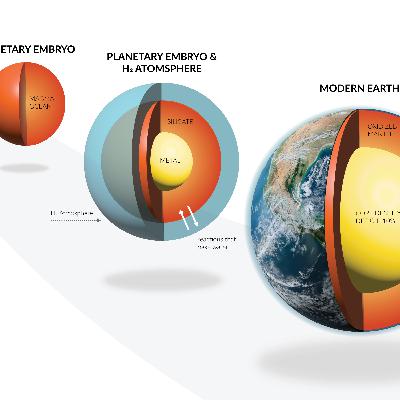

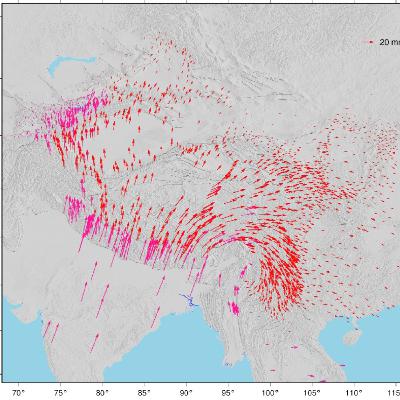

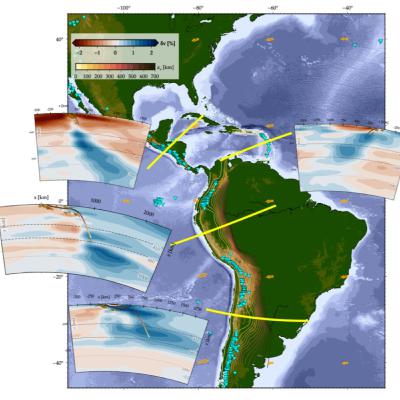
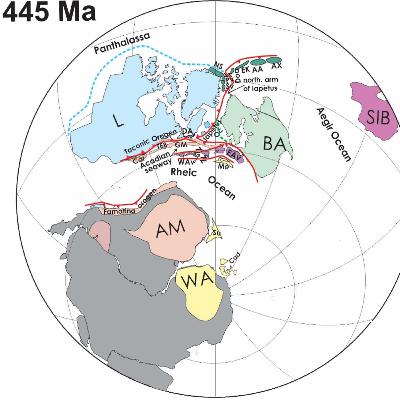
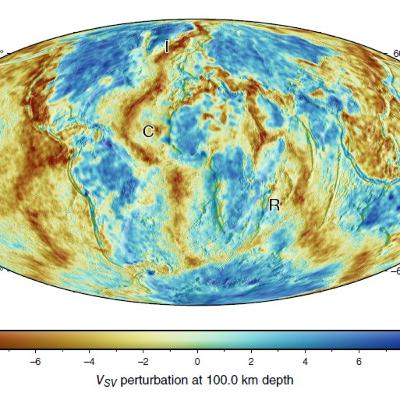
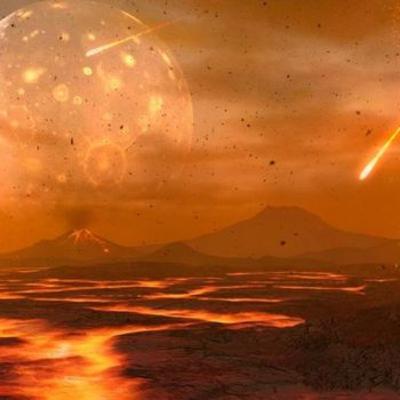
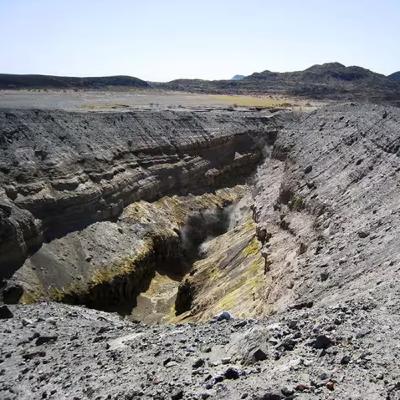
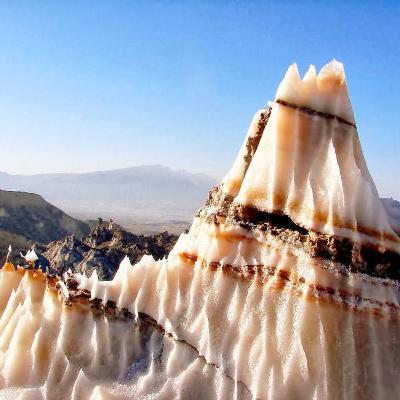
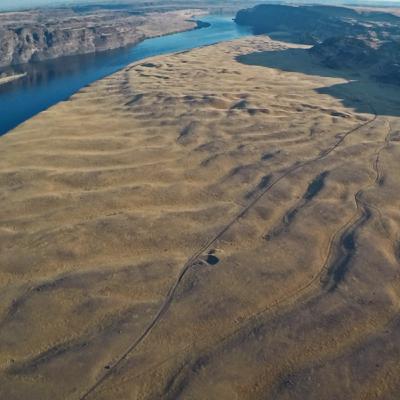

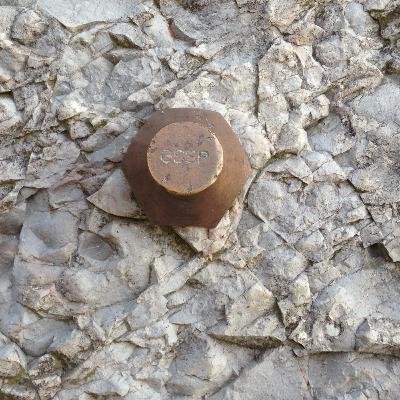
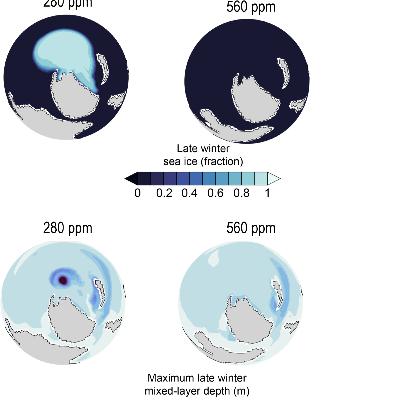

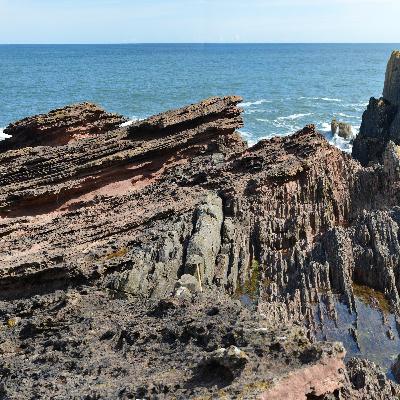







https://www.sandatlas.org/eclogite/ A good place to visit to see photos and learn more about Eclogite. 🌲🌲🌲 "The Christmas Stone" 🎄🎄🎄 With the green mica and red garnet in it.* **** Another good podcast and also as a app. (with Photos) Is the CampGeo. Highly recommended to bring in the field. Learn about your Planet and how to find the elements, minerals and stones. Enjoy (^^,) A 5 ⭐⭐⭐⭐⭐ Podcast.
⭐⭐⭐⭐⭐ Good Podcast 👍👍👍👍👍
these podcasts deal with all the latest geology discoveries with leading scientists and helpful summing up by Oliver. also website has many photos and diagrams etc to help understand the podcast. highly recommended
Superb photos and videos accompany this episode. What might explain the change in lava from the clinker to the ropey type?
Very interesting that research over decades can hopefully lead to the protection and preservation of the unique geology of Oman. Eclogite, my favourite rock, is commonly known as the Christmas rock and fitting that I listened to this on 23rd December!! I wonder whether the Geopark proposal is making headway? Excellent reading list to this episode.
Greatly enjoyed this episode, it was clearly structured and explained. I attended a public lecture a couple of years ago in Leicester in which the role of stromatolites building up and leading to the depression of the crust (and subsequent formation of dense minerals and rocks such as eclogite creating slab pull) was discussed as a possible early cause of subduction. Would this be consistent with what was discussed in this episode?
Fascinating episode. I found the ideas wide-ranging, combining many of Earth's systems. The resources on the Geology Bites website are superb.
A quick search for 'geology' returns numerous podcast titles. I have listened to most of them! Geology Bites by Oliver Strimpel is by far and away the best. New episodes are eagerly anticipated. The podcasts centre on the latest research updates from eminent people in their respective fields, explained in terms that generalists as well as experts can follow. One of the main strengths of Geology Bites is Oliver's logical questioning of the guest which is precise and succinct: he asks the questions the listener is thinking about! The guests clearly enjoy explaining their research. On the Geology Bites website are accompanying resources for each episode to view whilst listening. Further reading links for episodes are sometimes posted - I would like there to be more links to follow to extend the learning. I can't rate this podcast highly enough. Thank you to Oliver for putting them together and keep going!